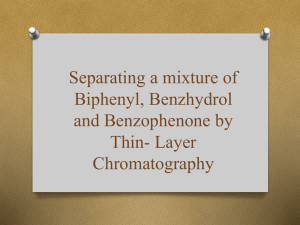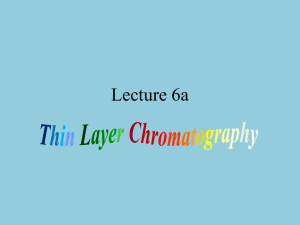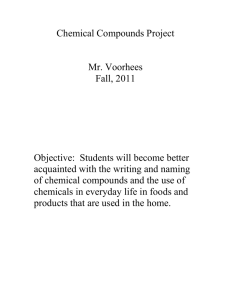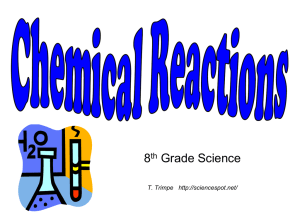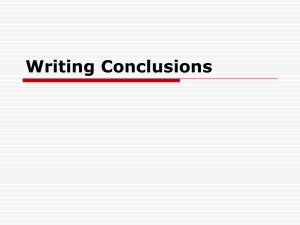File
advertisement
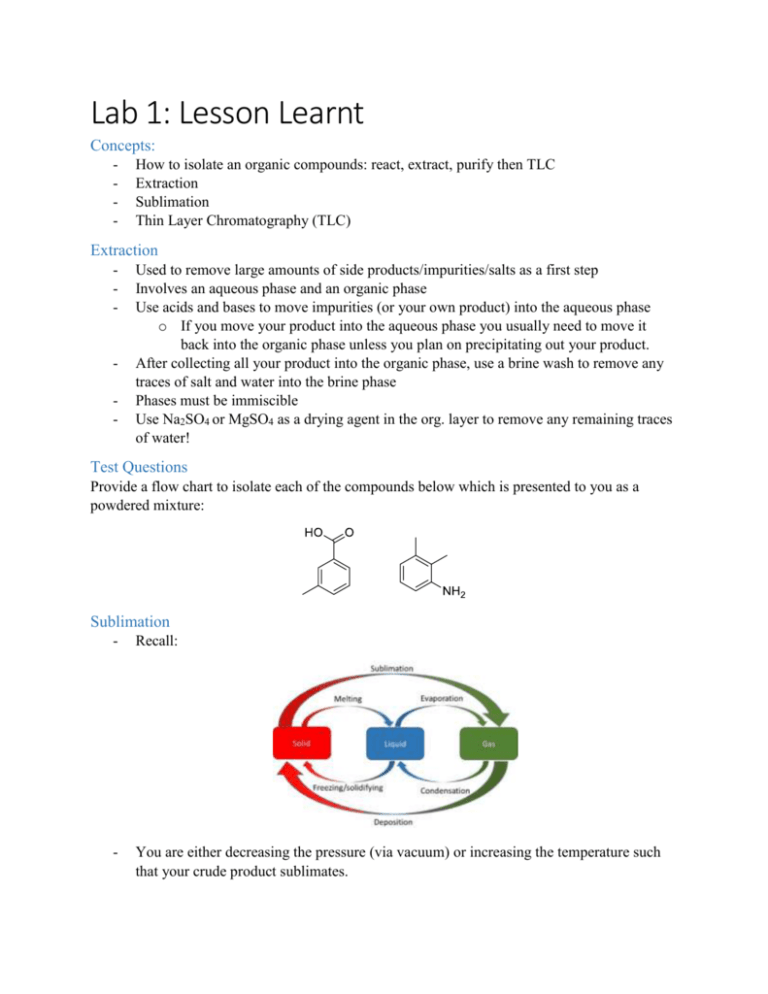
Lab 1: Lesson Learnt Concepts: - How to isolate an organic compounds: react, extract, purify then TLC Extraction Sublimation Thin Layer Chromatography (TLC) Extraction - - Used to remove large amounts of side products/impurities/salts as a first step Involves an aqueous phase and an organic phase Use acids and bases to move impurities (or your own product) into the aqueous phase o If you move your product into the aqueous phase you usually need to move it back into the organic phase unless you plan on precipitating out your product. After collecting all your product into the organic phase, use a brine wash to remove any traces of salt and water into the brine phase Phases must be immiscible Use Na2SO4 or MgSO4 as a drying agent in the org. layer to remove any remaining traces of water! Test Questions Provide a flow chart to isolate each of the compounds below which is presented to you as a powdered mixture: Sublimation - Recall: - You are either decreasing the pressure (via vacuum) or increasing the temperature such that your crude product sublimates. - The cold finger must be filled with ice or dry ice such that your purified product deposits onto the cold finger Works based on the fact your intended product can sublimate while your impurities do NOT sublimate at the given temperature. Test Question Explain why you must ensure no solvent is present in your crude mixture when performing a sublimation purification. Thin Layer Chromatography - - - Used to separate compounds on a silica plate to see what compounds are in your mixture, identify compounds using a standard or assessing purity Only aromatics, carbonyls, and unsaturated compounds show up under UV. Silica plates are polar compounds and so they hold onto polar compounds tightly (this is called the stationary phase) The mobile phase competes with the bonds between the compounds and the stationary phase and push the compounds up o More polar mobile phases are stronger and so can pull more polar compounds up the TLC plate The less polar the compound is the farther it moves up the plate o Since non-polar compounds do not “stick” to the polar stationary phase and so they move up easier o Polar compounds stick to the stationary phase and so they require polar solvents to push them up. Rf = distance from start / distance of solvent line Reverse chromatography uses NON-POLAR stationary phases and so polar compounds move farther up than non-polar compounds Test Question 1. Predict the TLC plate if you were to TLC a mixture of the following compounds using an appropriate eluent system to ensure optimal separation: 2. Predict the TLC plate of the following reaction at: a. The start of the reaction b. The middle of the reaction c. The end of the reaction Using an appropriate eluent system to ensure optimal separation.





